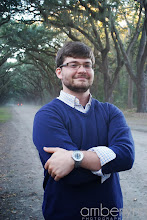The transition between the natural settings of the Romantic period to the industrial scraps of the Victorian era was not very subtle. With new inventions coming out all the time and the power of steam being used to power trains, people were getting excited and ready for the future. I first assumed that with the sudden growth in the cities and new technologies being discovered, poets and artists of this new industrial Victorian era would lose their beauty and elegance. I was, in fact, wrong! There was still plenty of imagination to go around and keep the writers busy. In Fanny Kemble’s chronicles of her first steam engine ride, contained in her Record of a Girlhood, she describes the beautiful little engine with great imagination and detail (So much that she would need a “foolscap extra” to write about it (490)).
Kemble begins with describing the little engine as a she, “for they make all these curious little fire-horses all mares,” to help personify the steam engine (490). Kemble refers to the engine as a she in order to help solidify the readily available remnants of the Romantic Movement and keep the readers interest. She next lists several of the key components of the engine, including a “barrel containing enough water to prevent her being thirsty for fifteen miles” (490). Again, Kemble gives the steam engine the living quality of thirst. While this is not a new idea, it contains so much importance. With the invention of all these machines, it would make sense that people would lose the pastoral and natural feeling of life and descriptions and soon turn into machines themselves. Thanks to Kemble though, the imaginative tradition is continued and there is no end in site. She does not stop for a second in her description, continuing with the wheels, “which are her feet” (490). In the end, she has constructed not a steam engine, but a horse, including its “upper extremities (the hip-joints, I suppose)”,”[t]he reins, bit, and bridle of this wonderful beast—a small steal handle,” and even “[t]he coals, which are its oats” (490-91). By the end of this, Kemble has constructed for the reader something entirely different than what the title implied. The next step, however, is the best.
Kemble says “I felt as if no fairy tale was ever half so wonderful as what I saw” (491). Here is the fusion, it would seem, between the new and the old. The quaint, magical elements of the Romantic Movement combined with the powerful and growing industrial era. Kemble sees this new, real life experience, as something much more magical than anything that Blake or Coleridge could ever write about, it would seem. The non-fiction of the 19th century takes on the fiction of the past and wins.

4 comments:
Corbin,
I enjoyed how you outlined Kemble's struggle to find words, as she related it to the "pastoral" concepts she was used to by "constructing" not a steam engine, but a horse! I also enjoyed how you accounted for the transition from Romantic to Victorian.
Good Job!
-Alex
Corbin,
I like the way you frame this post on Fanny Kemble's imaginative response to her ride on a locomotive with a broader context of the Romantic era verging into the Industrial age. You select appropriate passages to quote, and provide astute insights into Kemble's use of natural metaphors to describe an unnatural device.
Corbin,
Good focus on the transition between the two periods. I think we often like to categorize literature into a period and forget about the flux time in between periods.
I liked how you identified the Romantic magic in Kemble's writing, in light of the fact that she was writing at the beginning of the Victorian Era.
Great job!
Good post and discussion of Kemble’s “Record of a Childhood.” It’s not uncommon for us to describe and relate what we already know with something very new and different. In Kemble’s case, the train was something incredibly different. There’s really nothing she can describe about the train that would make more sense to the audience at the time than illustrating it like that of a horse, of which they can “ride” and feel the sensations.
I agree with your identification of the Romanticism in the poem. Kemble is indeed a romantic poet in a modern era. It’s very reassuring that the beauties of past styles are not lost with time. Poetry in itself is timeless as long as we have free will and expression.
Good Job!
Post a Comment